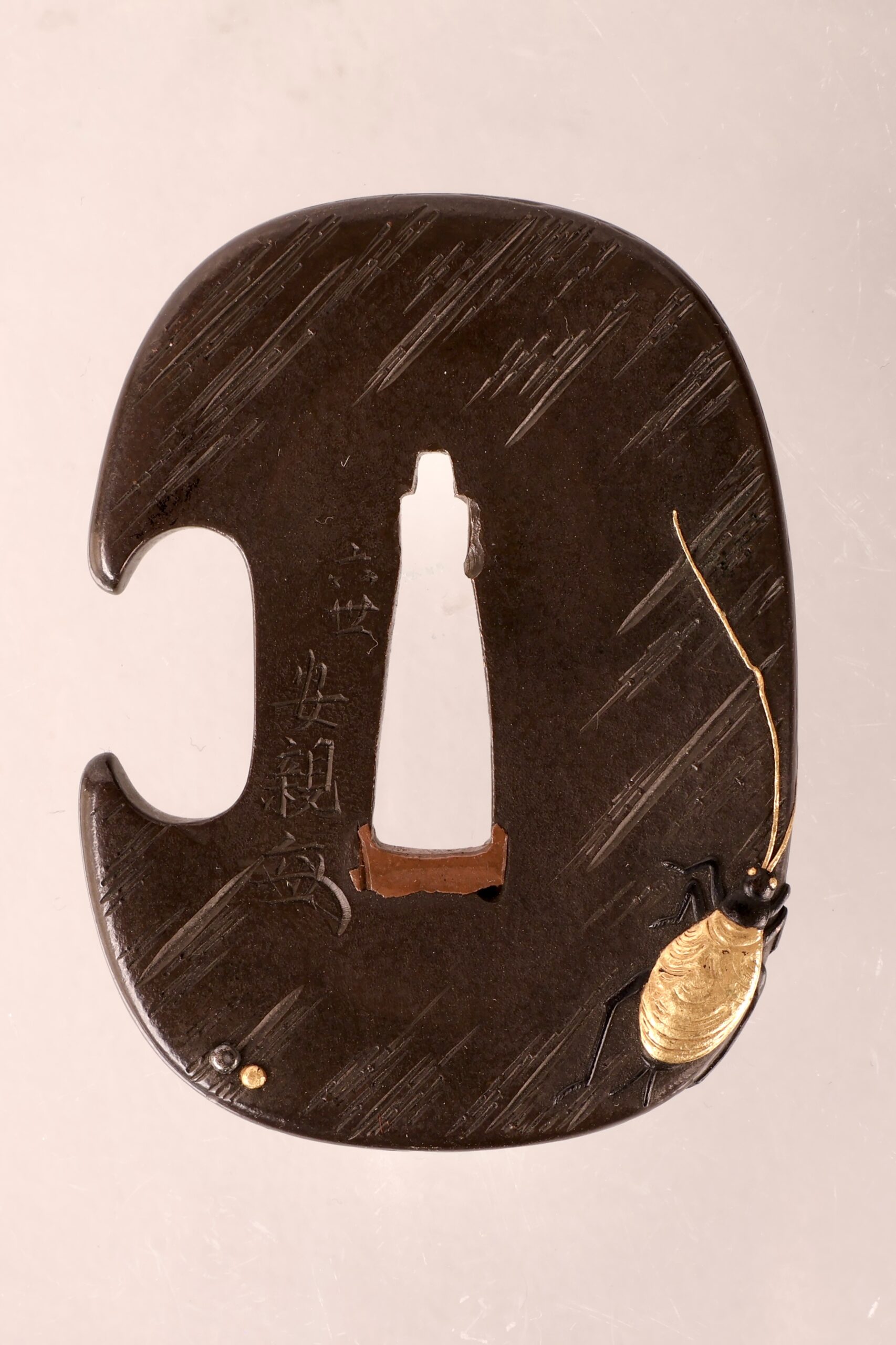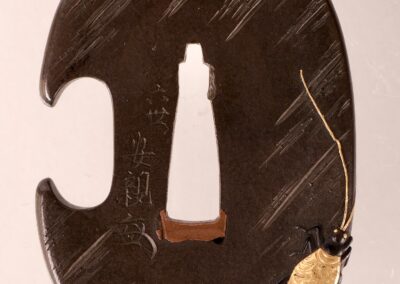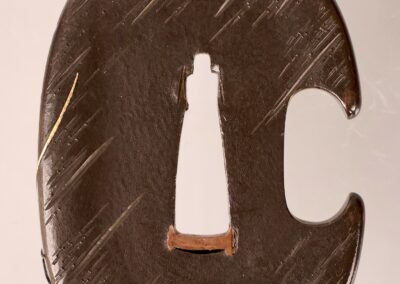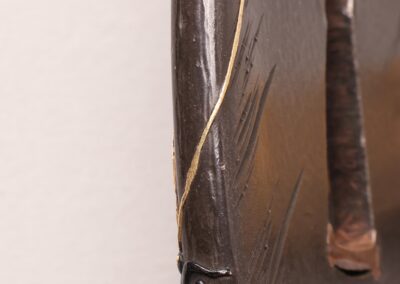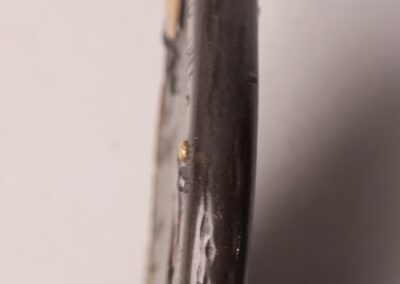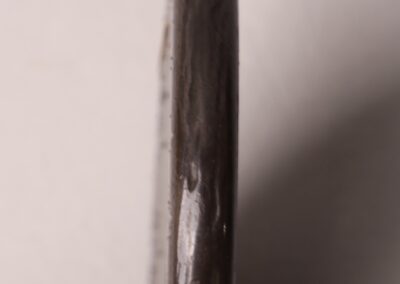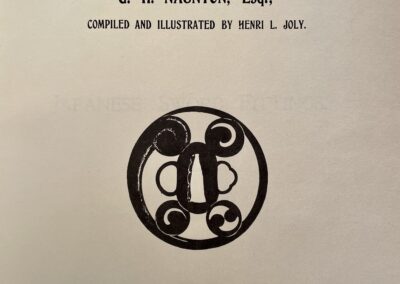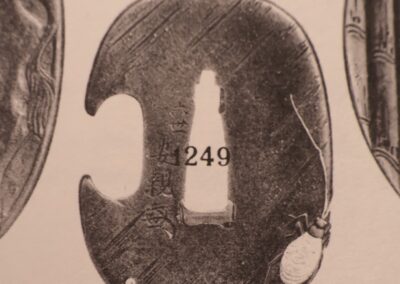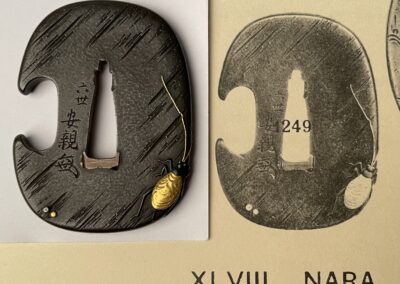Arts of the samurai
A Shibuichi Tsuba by Yasuchika
A Shibuichi Tsuba by Yasuchika
Japan, 19th century
Signed: Rokubei Yasuchika ‘kao’
5.5 x 4.1 cm x 4.5 mm
This dark shibuichi tanto-tsuba is chased with deep rain lines on an ishime ground and applied with a shakudo and gold suzumushi (bell cricket), raindrops in gold and silver on both sides and a brass sekigane.
Although crickets were beloved pets in 19th century Japan, it is very unlikely that such expensive materials were used for such an ‘obvious’ reason.
The ‘hidden’ meaning (rusu moyō) probably lies in the fact that chapter 38 in the famous book ‘Genji Monogatari’ is called ‘suzumushi’.
During the first half of the 19th century however, a parody on the Genji Monogatari called ‘mise Murasaki inaka Genji’ became very popular. This book’s chapter 38 was also called ‘suzumushi’ and perhaps the position of the cricket on this Tsuba is meant as a conversation piece, asking the keen viewer whether they prefer the classical ‘Genji Monogatari’ or the new ‘mise Murasaki inaka Genji’?
The artist, Yasuchika 6th, was the first son of Kunichika (known as the 5th generation Yasuchika) and active during the first half of the 19th century. According to Heynes (11109.0) he signed most of his works as Tōsen Masachika. He was very prolific and many examples of his work have found their way to Western collections. He was retained by the Satake Daimyo of Akita at their Edo compound and is said to have been a student of his father, of Hagiya Katsuhira and of Tanaka Kiyotoshi. He died in 1861.
Provenance:
Delen Family Collection, Lisse
Aalderink Oriental Art and Ethnografrica, Amsterdam
Collection of G. H. Naunton, Esq. nr. 1249

